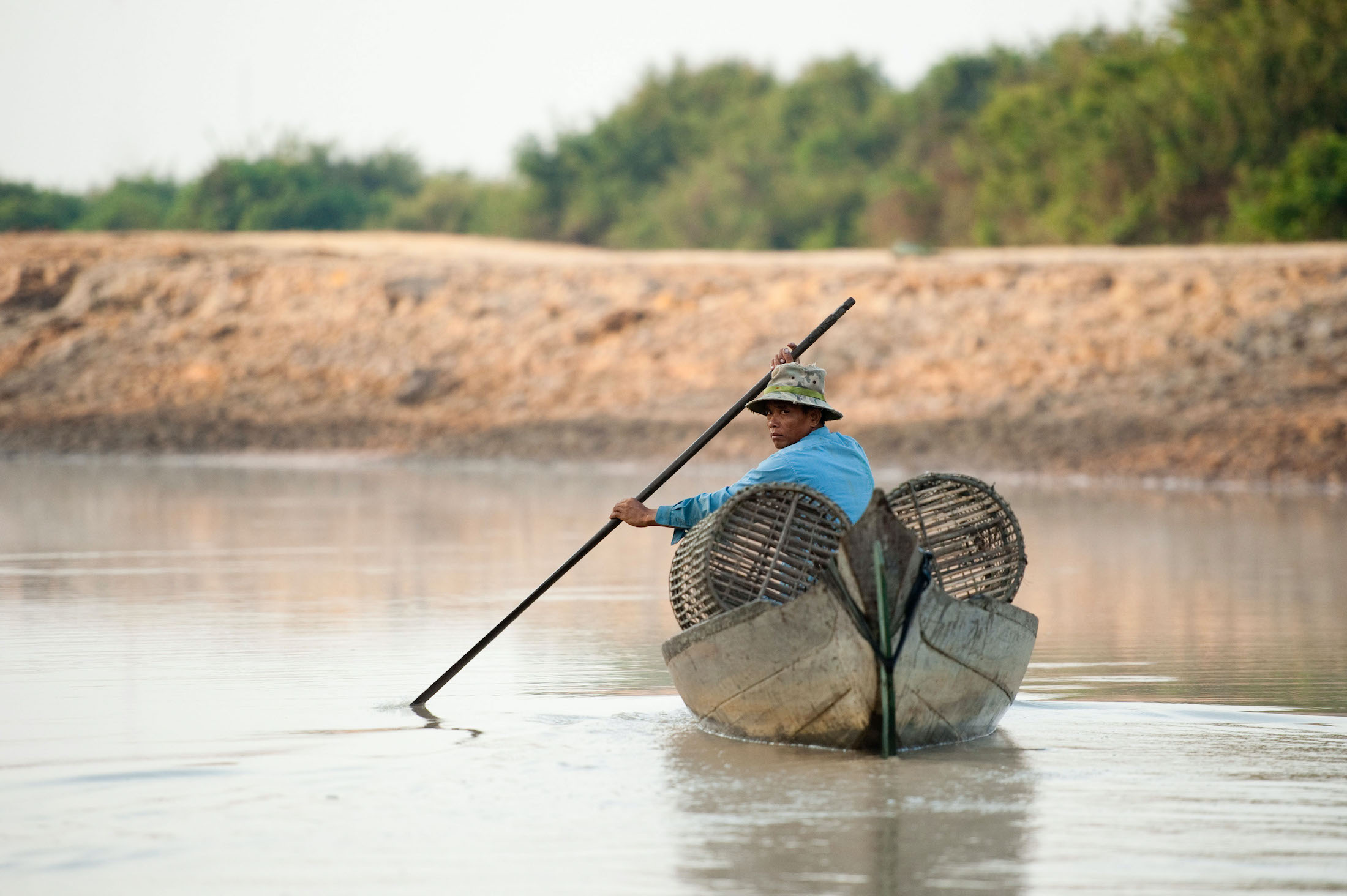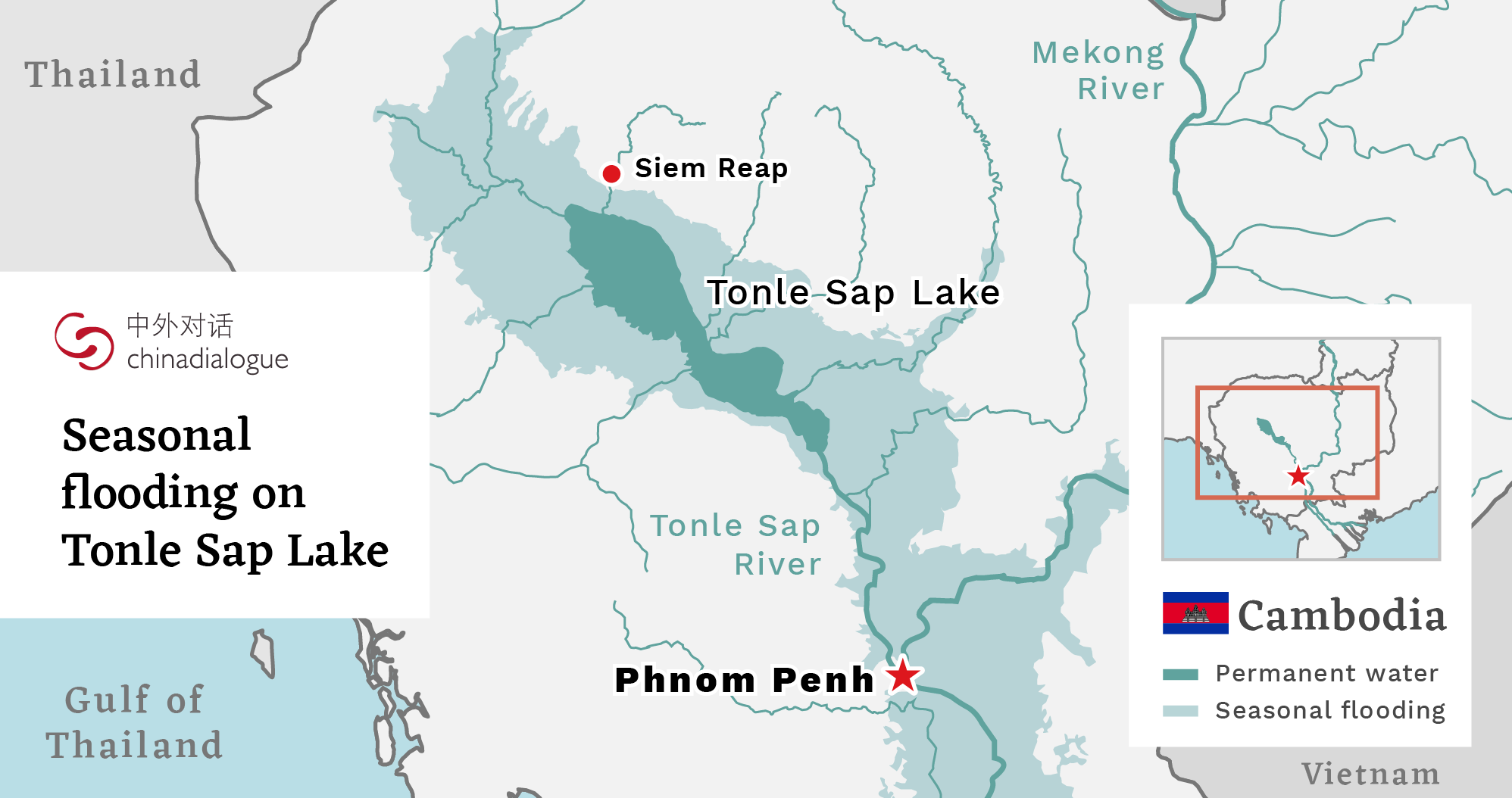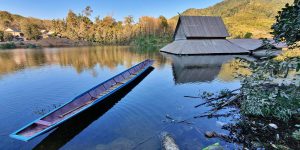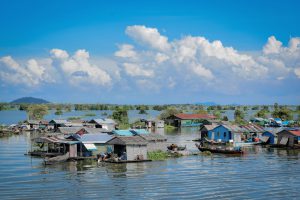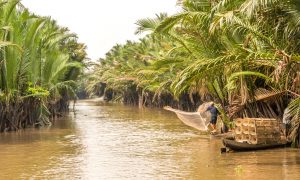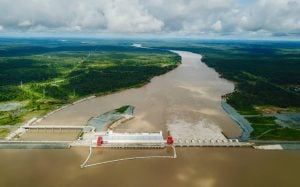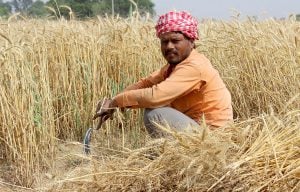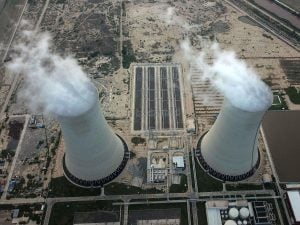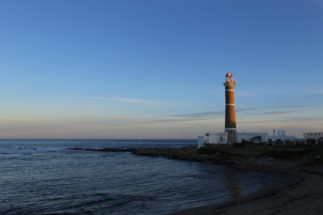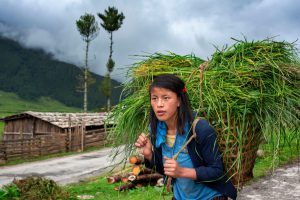As the Tonle Sap floodplain empties into the Mekong this spring, the Cambodians who rely on these waters face bleak prospects, with fish catches reportedly 10 to 20% of previous years. Blame for the precipitous decline in the ecology has been put on the many hydropower projects upstream.
The Tonle Sap River – pronounced Ton-lay Sap – reverses flow when the Mekong floods in summer. This floods the Tonle Sap Lake, which balloons to five times its low-water size, creating the largest lake in Southeast Asia and supplying one of the most productive freshwater fisheries on Earth.
In 2019, a combination of climate change, El Niño and dams on the Mekong and its tributaries caused the Tonle Sap River to reverse in August rather than June and for only six weeks instead of the usual five to six months. The resulting shallow, warm, oxygen-starved waters devastated the fisheries.
Amid pressure from local and international environmental groups, Cambodia took the initiative in March to announce a ten-year moratorium on new dam projects in an effort to protect downstream areas like Tonle Sap. But the problems with Tonle Sap’s fisheries begin much further upstream with hydropower dams in China and the way those facilities manage the storage and release of water.
‘Death by a thousand cuts’
Taber Hand of Wetlands Work, an organisation that provides sustainable water treatment solutions, describes the damage to Tonle Sap as death by “a thousand cuts”. It started with unsustainable fishing in the 1990s and was followed by damming of most of the 27 tributaries into the lake for dry season irrigation.
More than 1,300 kilometres north of the lake, China began damming the Lancang – its section of the Mekong – in 1986 with the Manwan Dam. In the following decades, China built 11 more mega-dams on the Lancang which comprises more than half of the sediment crucial to the Mekong’s ecology. The northernmost of the dams is Yunnan’s 990-megawatt Wunonglong Dam high in the Himalayas of the Diqing Tibetan Autonomous Prefecture, which was completed in 2019. They continue down to Jinghong near the lush forests of Xishuangbanna. More dams are planned even closer to the Thai border at Ganlanba and Mengsong.
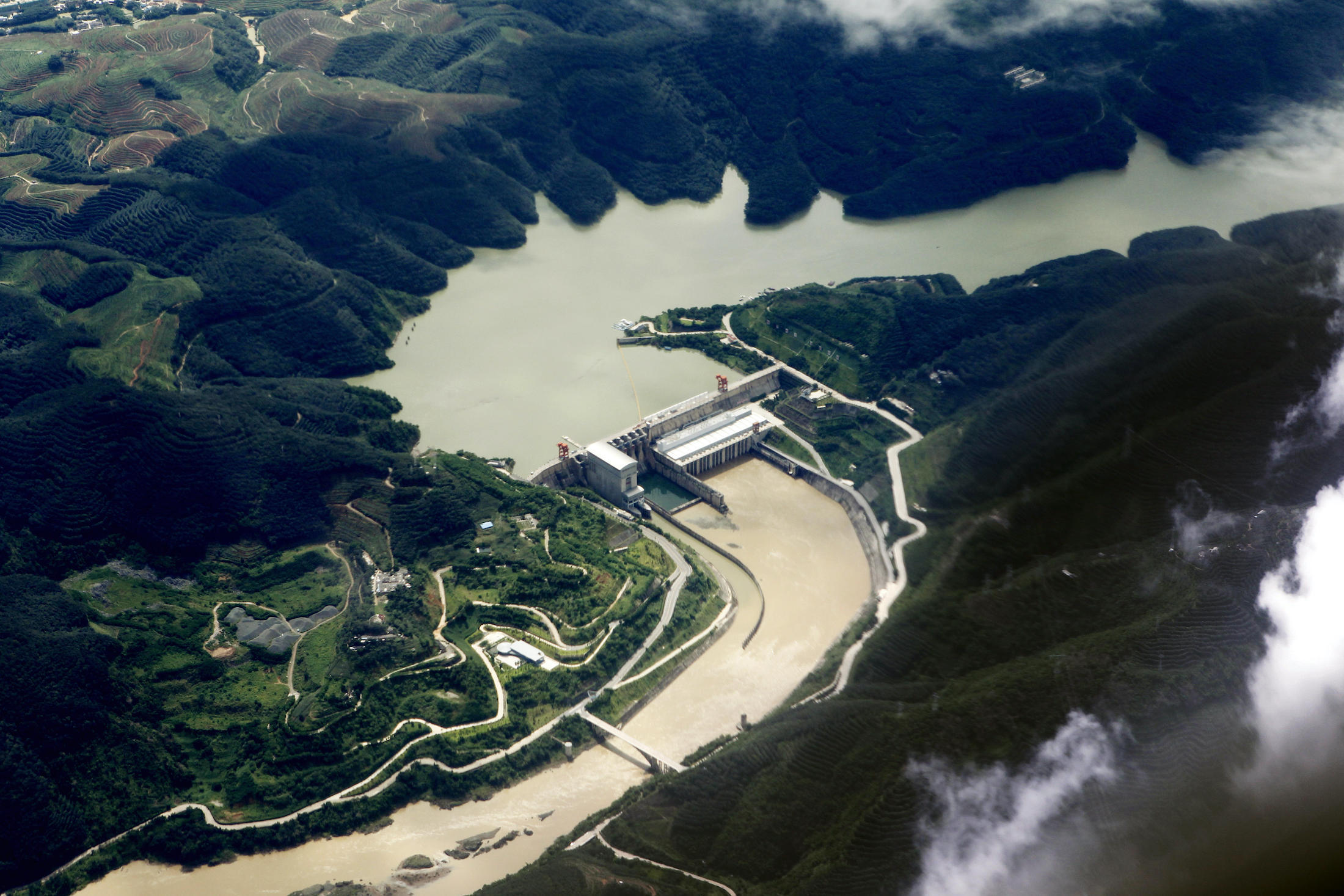
Jinghong hydropower station on the Lancang River in China (Image: Alamy)
Using satellite imagery and river height gauges, an April study from Eyes on Earth, a water resources monitor, gave credence to suspicions that Lancang water policies were partly responsible for the record droughts experienced throughout the Mekong region in 2019.
“The satellite data does not lie and there was plenty of water in the Tibetan Plateau, even as countries like Cambodia and Thailand were under extreme duress,” Alan Basist, who co-wrote the report for Eyes on Earth, told The New York Times. “There was just a huge volume of water that was being held back in China.”
According to the report, during the 2019 drought – which saw the Mekong at century-low levels and the late reversal of Tonle Sap River – China’s portion of the Upper Mekong received uncommonly high levels of rain but the resulting flow was stopped by the Lancang dams.
The report, which collected data from 1992 to 2019, states the algorithm’s “wetness index” could be used to simulate natural flow conditions via cooperation among the dams on the Mekong mainstream. The increased dams on the Mekong mean unprecedented control over the river’s flow, but at present few governance mechanisms between China and lower Mekong nations provide relevant, timely solutions.
Even if natural flow conditions for the Mekong could be properly simulated, it wouldn’t address the loss of sediment and changes to fish migration patterns that are crucial to the ecology of places like Tonle Sap Lake. Combined with the shorter monsoon season and a longer dry season because of climate change, Tonle Sap’s ecosystem – from the giant Mekong catfish to the spot-billed pelicans – has strained.
Laos and Cambodia have also been keen to use hydropower to meet their growing power needs. Cambodia in particular, which relies on hydropower for 48% of its domestic power production, saw massive power outages in 2019. Don Sahong Dam near the Laos-Cambodia border is the nearest Mekong mainstream dam to Tonle Sap, constructed by Sinohydro and at the insistence of Laos. It started producing power in early 2020.
“It’s not all in China’s control. China has 100% control of dams within Yunnan, yet they may not have 100% control of dams in the lower Mekong,” Taber Hand says. When asked what could be done to help Tonle Sap’s fisheries, Hand responded, “Whoever owns or controls the Don Sahong Dam in Laos would have to agree to take it out.”
Lack of coordination
The Mekong River Commission (MRC) includes Cambodia, Laos, Thailand and Vietnam and should be the river’s first line of multinational regulation for downstream countries, including the sustainability of fisheries in regions such as Tonle Sap. However, the body is advisory and has made little difference to the dams that have gone up since its creation in 1995.
“China has provided its water level and rainfall data only during the flood season and from only two out [of] its many stations on the upper Mekong. This is not sufficient,” the MRC told the Khmer Times when asked about the Eyes on Earth report, adding the need for further cooperation with China on mitigation measures and information sharing. “The MRC would like China to provide more data that covers more stations and includes the dry season, too.”
China’s Lancang-Mekong Mechanism was China’s answer to development planning in lower Mekong countries, welcomed by the MRC when the organisation held its first leaders’ meeting in 2016. As recently as December 2019, during the droughts, the MRC and LMC signed a memorandum of understanding on data and information exchange and basin-wide monitoring. Data on China’s water usage can be difficult to obtain, having been described as a state secret.
“The MRC has no enforcing mechanism to force policymakers to agree on whether to build or not to build a dam on the mainstream. It’s not binding, it’s peer pressure, it’s voluntary,” says former Cambodian energy minister Pou Sothirak. “This LMC is a new type of Chinese diplomacy. You will have to withstand or face it because in no way will this slow down.”
A crucial link on China’s Belt and Road, the LMC has moved away from hydropower dams, but there is pronounced repetition of dams for flood control. For regions like Tonle Sap that rely entirely on the flood pulse, flood control dams – used for the mitigation of flood risks and for irrigation – are even more destructive to the ecology.

Collecting water hyacinth on Tonle Sap Lake (Image: Alamy)
Breaking point
“No one can definitively say whether the Tonle Sap has reached its ecological breaking point or when that breaking point will come,” says Brian Eyler of the Stimson Centre and author of Last Days of the Mighty Mekong. “We know it’s soon. But the thing that concerns me most is that it could be here and now.”
Mainstream Mekong dams are not the only problems for Tonle Sap. Tributaries like the Nam Ou, which contributes a great deal of sediment due to its elevation, are being dammed at a rapid pace with even less oversight.
The Nam Ou hydropower cascade in Laos consists of seven dams, three of which are operational and four slated for completion in 2020. According to Eyler, not a single dam built by China on the Mekong has effective mitigation for fish or sediment.
“The Nam Ou dams are the worst built in all of Southeast Asia, not just the Mekong basin. [They] have zero environmental mitigation built into their design – no fish passage, no sediment gate,” Eyler says.
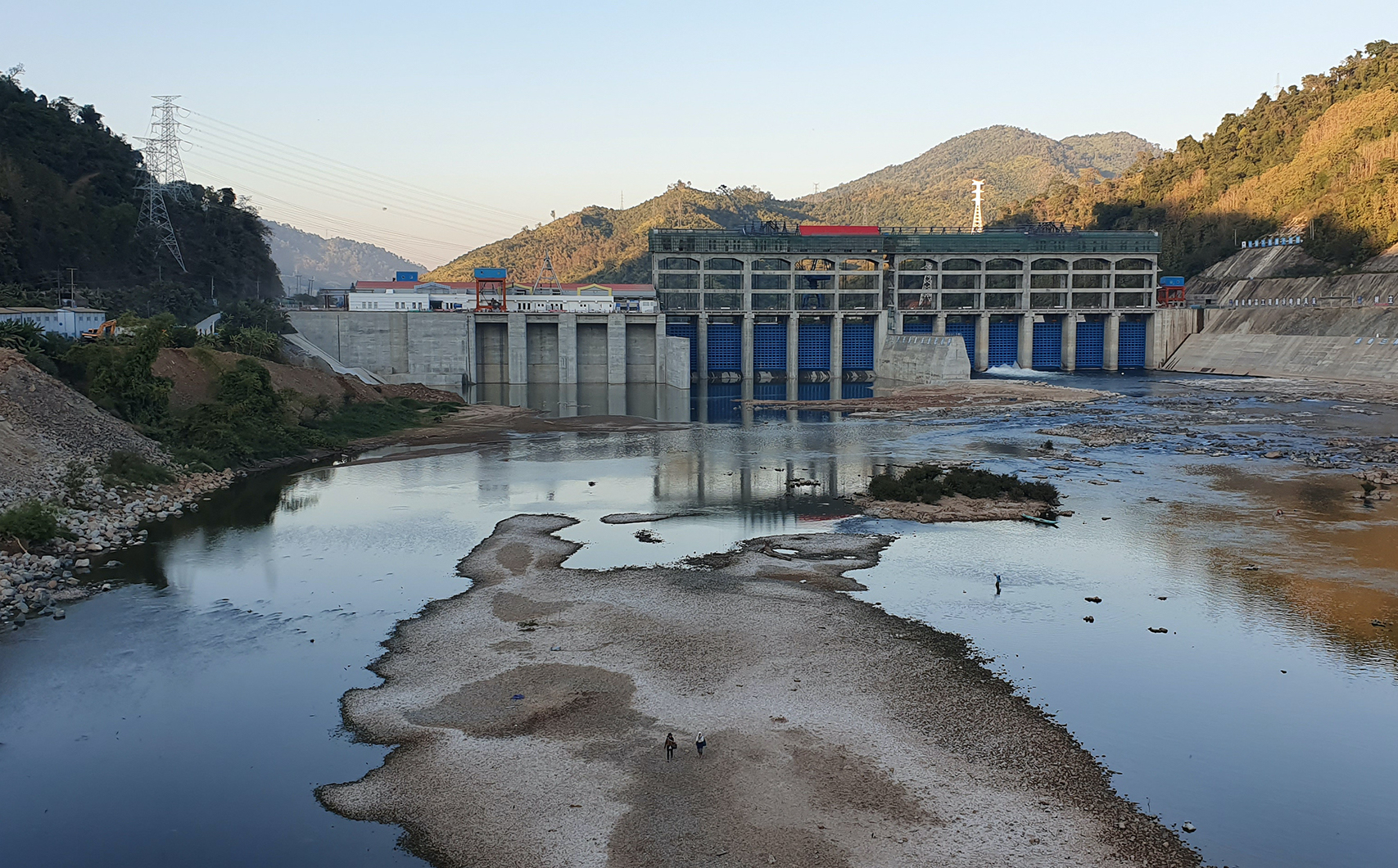
The Nam Ou 1 is the last in a seven-dam cascade being built along this tributary of the Mekong by China’s Sinohydro Corporation (Image: Ton Ka/China Dialogue)
After flowing through the sediment-rich lands in northern Laos, the Nam Ou connects to the Mekong at Luang Prabang, where yet another dam is planned. The entire hydropower cascade will provide 42% of Laos’ domestic electricity consumption when completed by the end of 2020, a combined 1,272 megawatts.
“I visited Sinohydro’s chief engineer in charge of the seven dams being built on the Nam Ou and I asked him why weren’t environmental-mitigation efforts put into these dams?” Eyler says. “His response was that the Lao government never asked for it.”
One of the more advanced dams, Xayaburi, a Thai-built and owned dam that went into operation this year has fish ladders and sediment-flushing gates, but the technology is based on rivers from Europe and the US so is unable to cope with the Mekong’s biodiversity – a river system that may need to move more than 30 tonnes of fish in one hour. For the sediment gates to be effective, the dam would have to reduce capacity and efficiency, which the developer is unlikely to countenance.
The Sambor Dam in Kratie province, now postponed to 2030, is one of the most high-profile dams that could spell the end of Tonle Sap. Eyler claims that adapting it to even the low standards of Xayaburi would be prohibitively expensive.
“The last 12 months have shown more symptoms of what has been predicted for the river’s ecological tipping point,” Eyler says. “There are those who say the present number of dams could cause the Tonle Sap’s expansion to not happen. Sediment removal from sand mining in Cambodia and Laos also has an impact.”
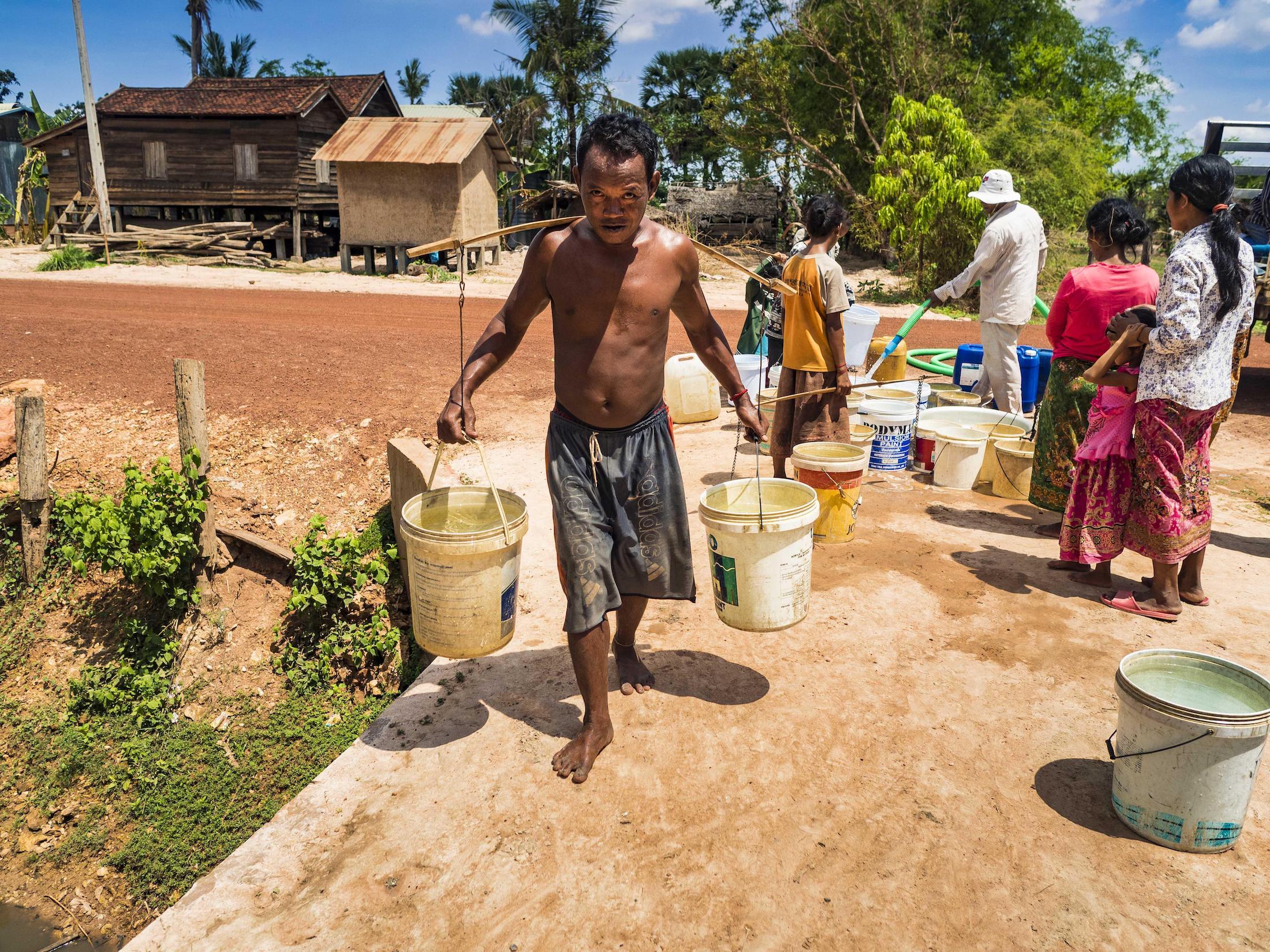
Collecting water in Sot Nikum village near Siem Reap. During the recent extreme droughts, residents relied on water supplied by NGOs or bought from sellers. (Image: Alamy)
Already, 2020 has shown worrying signs, with around 20 provinces in Thailand, Cambodia and Vietnam having declared drought emergencies three months ahead of the dry season in April. While smaller flood relief dams upstream can help with drought, these quick fix dams do little for the beleaguered Tonle Sap fisheries.
“There is no way to engineer what the Tonle Sap does, no matter how many engineers say they can,” Eyler says. “That’s the most ludicrous idea that I’ve ever heard for the Mekong, particularly because, currently, the Mekong is still doing this for free.”
Support for alternatives
The hard truth for residents of Tonle Sap in the short term is that the fish aren’t coming back. Those who rely on the fisheries, a great many of whom are stateless, could use assistance suggests Senglong Youk of the Fisheries Action Coalition Team in Cambodia, particularly with diversifying their income into areas such as eco-tourism, handicrafts and aquaculture.
“By 2040 if there is no proper intervention from the government and other relevant stakeholders … the lake will become a soccer field,” Senglong Youk says, adding that the ailing economies of the lake in the short term could be supported by grants for fisheries technology, patrolling and income diversification.
The 3 million people who call the Tonle Sap region home rely on what used to be an annual US$2 billion fisheries industry, but also on the seasonal flooding that fills their rice fields. Without the seasonal flood pulse, the people of the Tonle Sap are losing the foundations of their local economy, with 2019 studies showing an 18% loss in income for those engaged in a single livelihood.
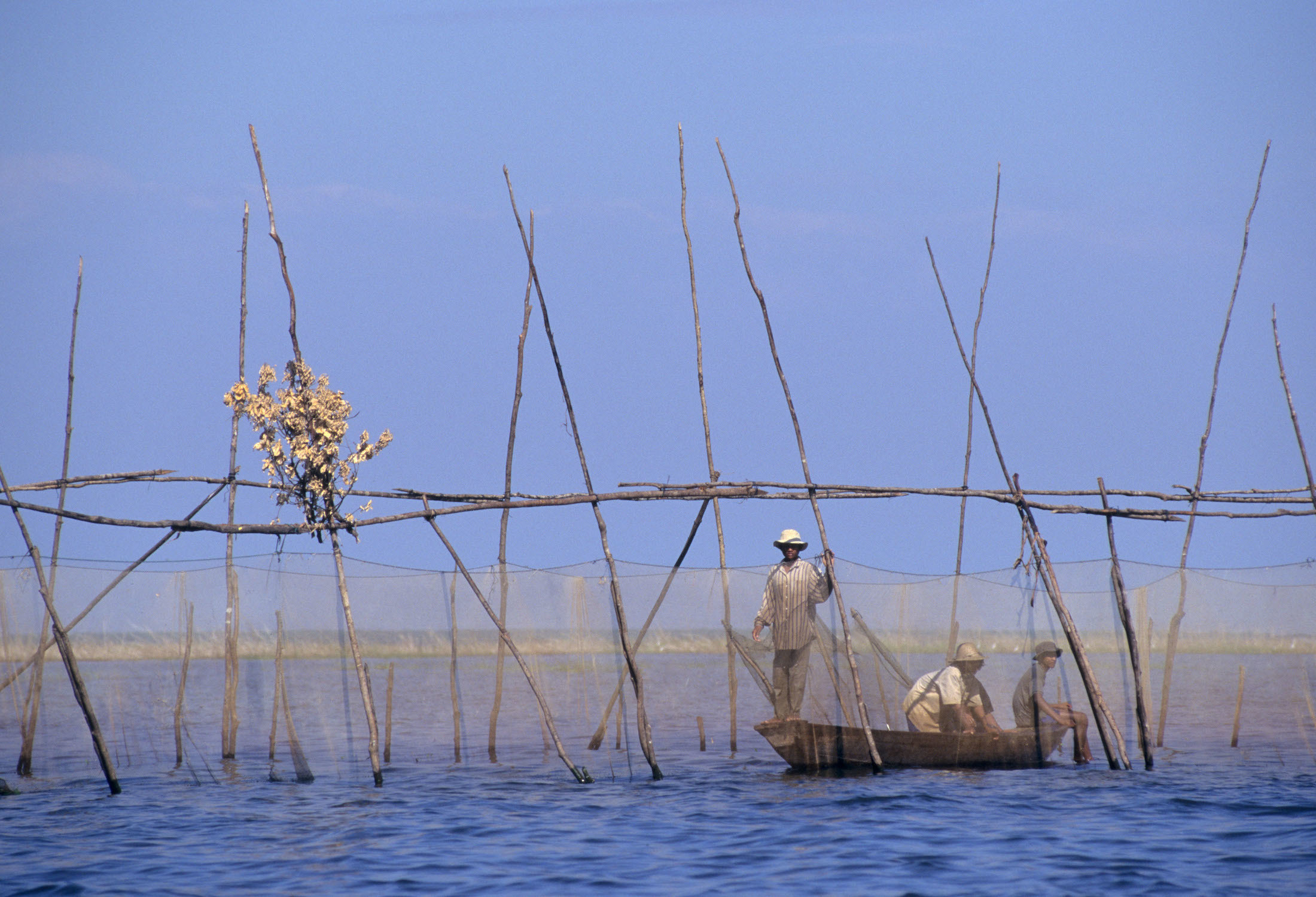
Without seasonal flooding, those who rely on the Tonle Sap fisheries face an uncertain future (Image: Alamy)
Even if China could retrofit its own dams in Yunnan to release the needed amounts of water and sediment, the Laos watershed is still responsible for 70% of the Tonle Sap pulse.
Upstream from Tonle Sap, the Mekong turned blue in 2019 and dried up into pools in worrying signs for the dry season to come. If the Tonle Sap ecology reaches its breaking point – in the scenario where the river doesn’t reverse at all – assistance from China or low interest loans could be a stopgap to avoid an economic crisis in and around the lake. In the past, China has been willing to forgive debt, offer aid and provide Cambodia with its largest source of investment.
China’s engagement through the Belt and Road doesn’t help countries plan out their sectors, whether it’s building roads or energy generation. This would have to change, Eyler says, adding that China’s solar power know-how could be a longer term solution.
“The Belt and Road certainly could be reconfigured with just a little tweak to support more solar abroad,” Eyler says, adding that solar is as “attractive as building coal or hydropower plants.”
“So there could be a cohort of Chinese investors whether private or state owned that could deploy more solar, wind and biogas in these countries. If Beijing supplies them… this type of investment could shock mainland Southeast Asia in a positive way, so much so that China’s soft power gains would be tangible.”
In February, Lao officials signed a product development agreement with China’s Hangzhou Safefound Technology to build the world’s largest floating solar power project at Nam Ngum 1 Dam reservoir, with an installed capacity of 1,200 MW and covering an area of over 1,500 hectares.
“If Beijing wants to make good on the green Belt and Road, then the rivers in which it’s acting abroad need to be treated for their value,” Eyler says. “And that can only be done by having meaningful conversations with people on the ground.”
